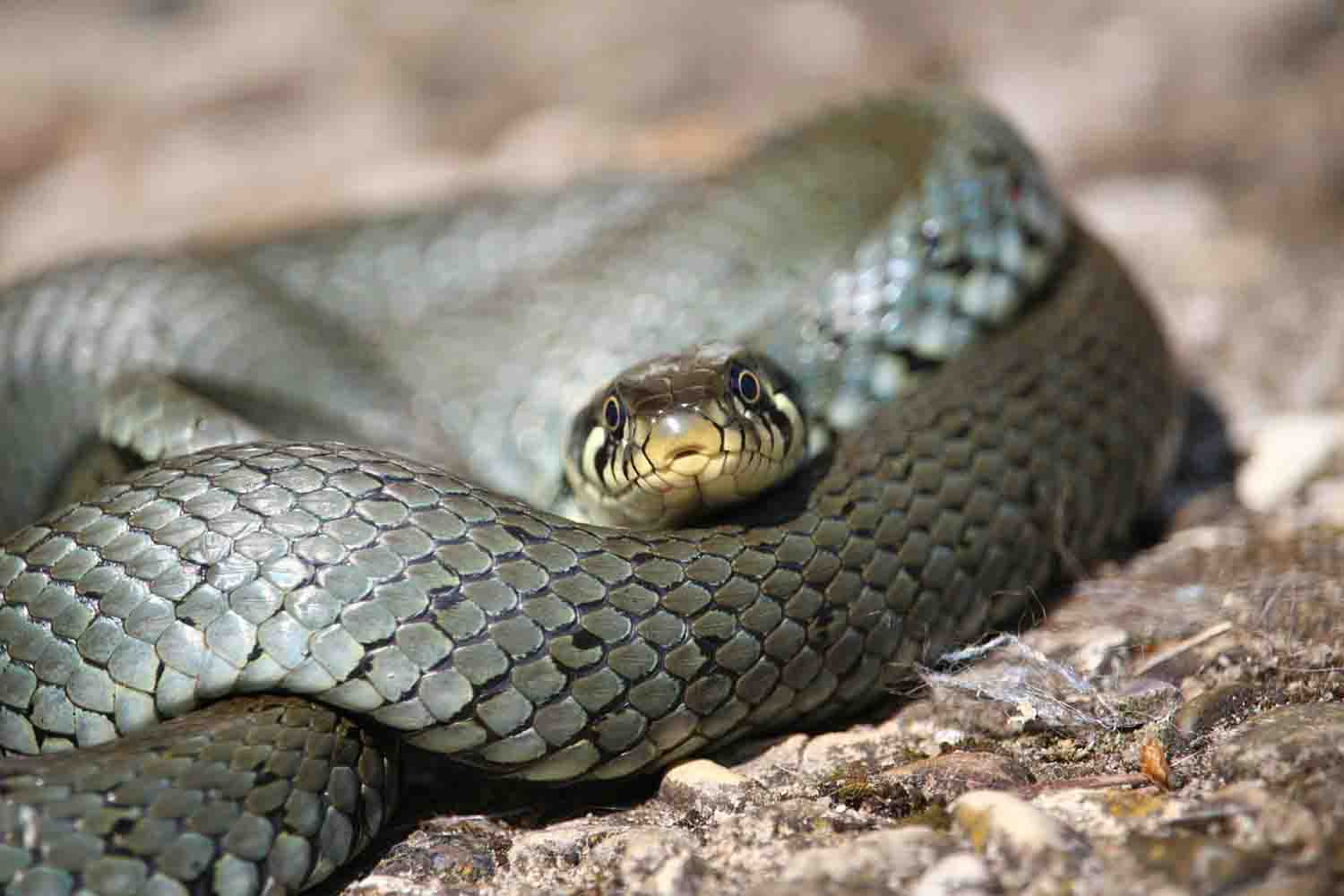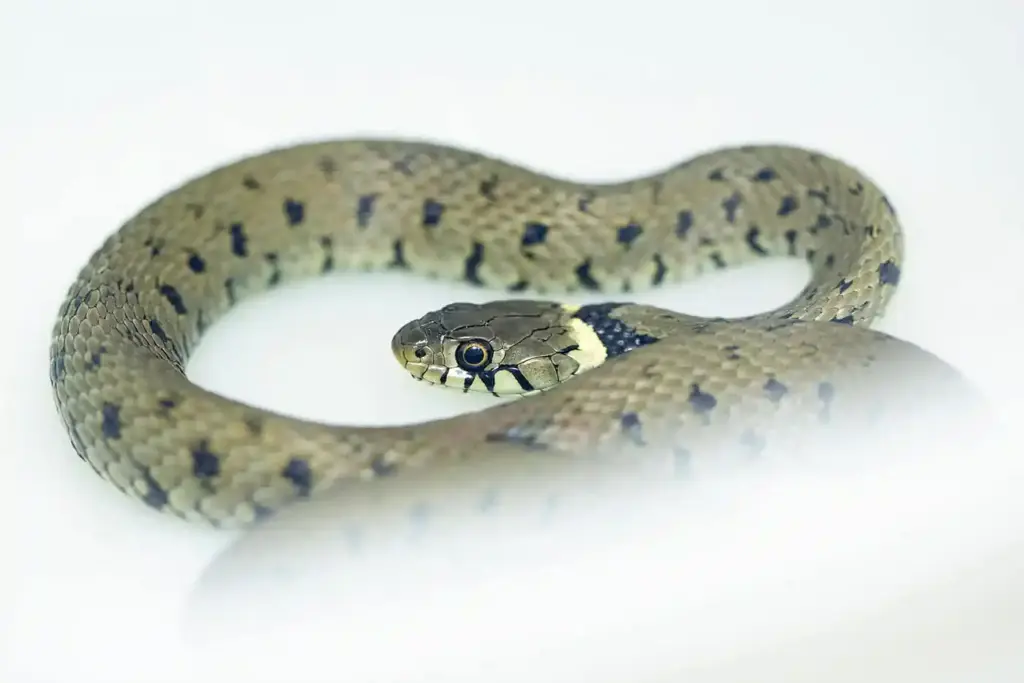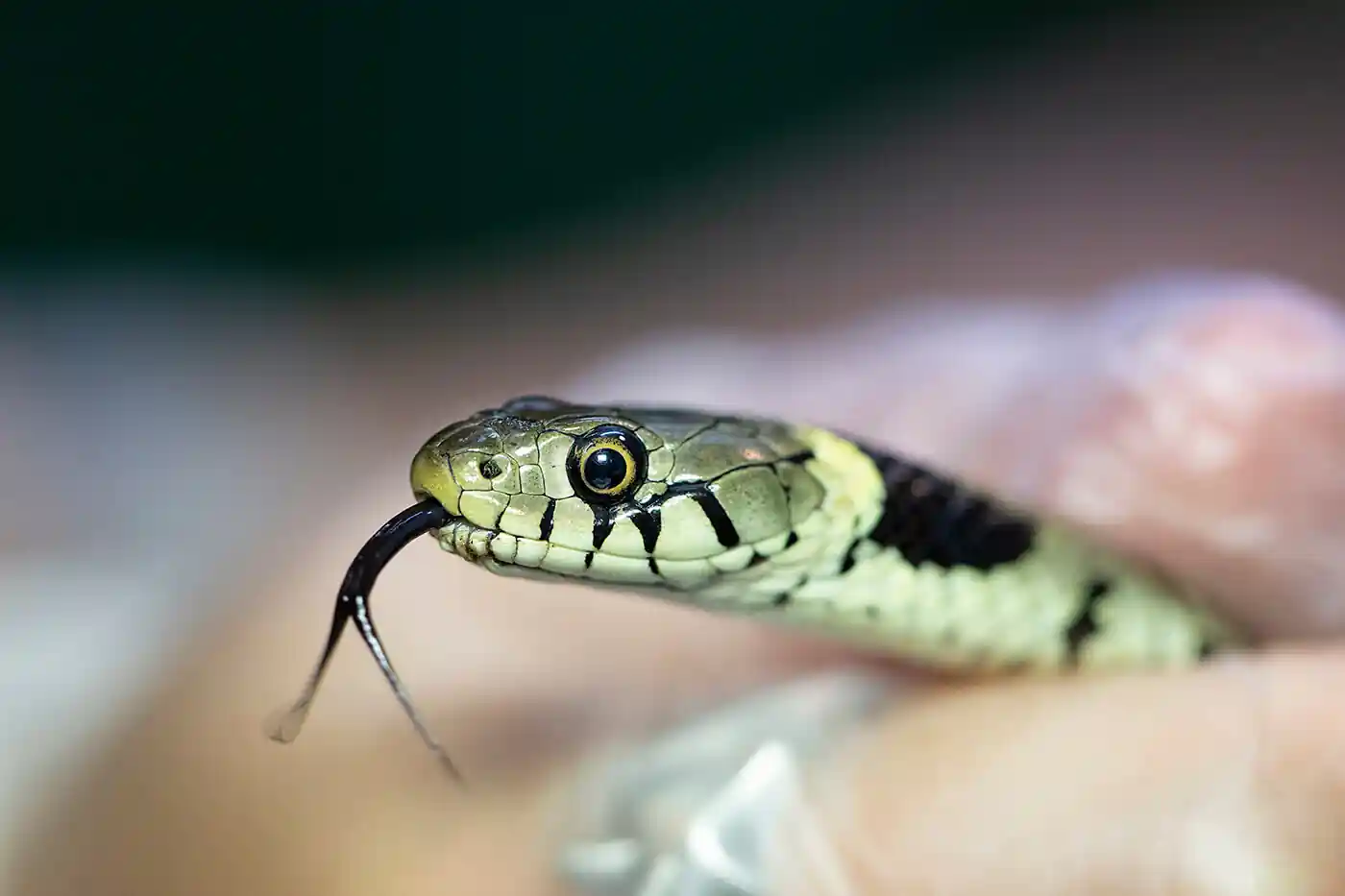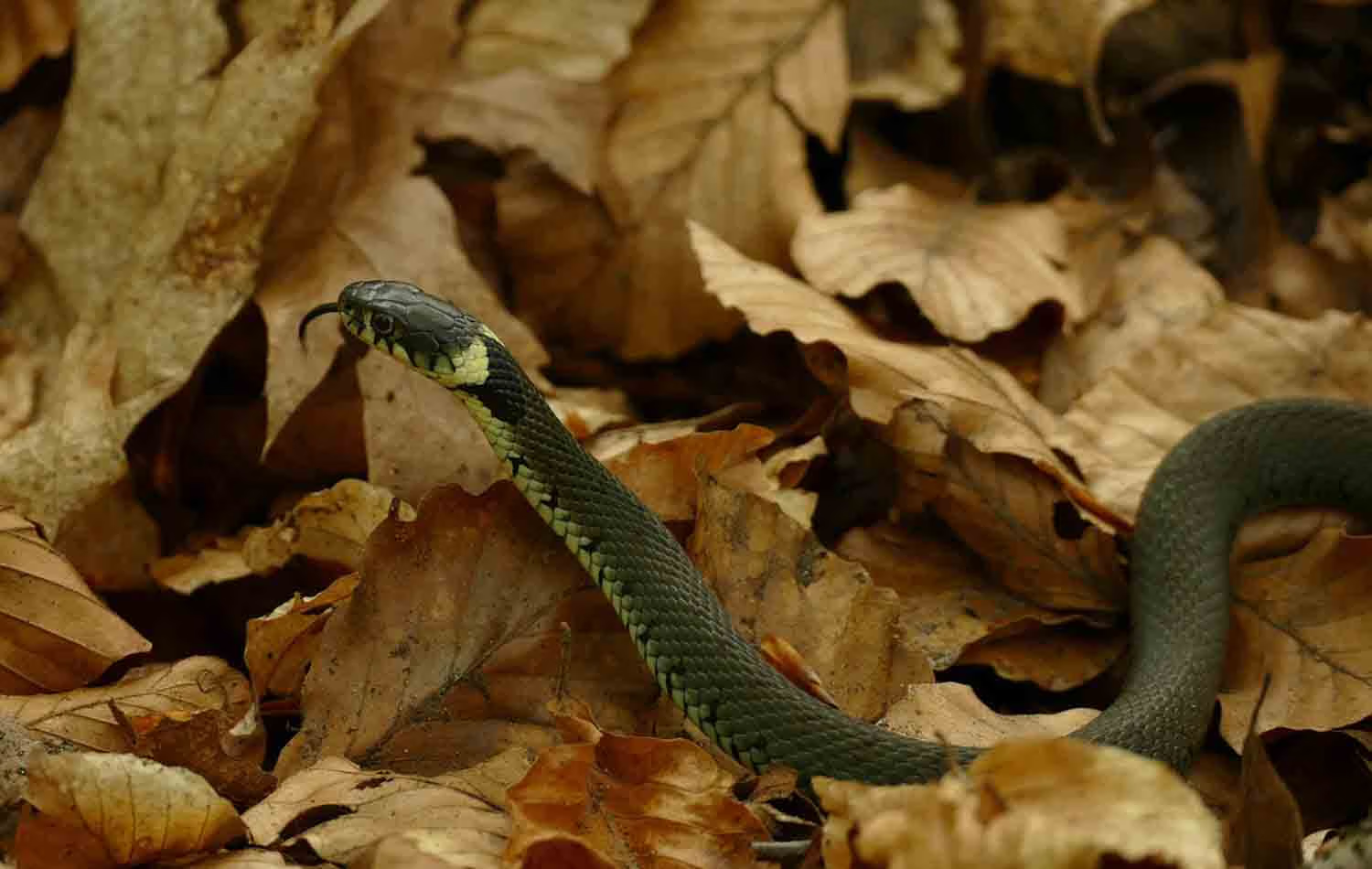Grass snake
Natrix helvetica
Life History
Length: 90 – 150 cm
Weight: 240g
Diet: Amphibians, fish, small mammals and birds
Average lifespan: 15 – 25 years
When to see them: April to October
UK conservation status: Protected

About
The grass snake is Britain’s largest native reptile and one of its most fascinating. Commonly found near ponds, lakes, and wetlands, this harmless, non-venomous snake is a skilled swimmer and often seen gliding gracefully through water in search of amphibian prey. Recognisable by its olive-green body, dark markings, and distinctive yellow-and-black collar around the neck, the grass snake is a true icon of the British countryside.
Behaviour
Grass snakes are active during the day and are often seen basking in sunny spots or swimming gracefully in ponds and streams. They are excellent hunters, preying mainly on frogs, toads, and newts, which they capture and swallow whole. Being cold-blooded, they rely on the warmth of the sun to regulate their body temperature and will seek shade or shelter when it gets too hot.
Although naturally shy and non-aggressive, grass snakes have several clever defence tactics. When threatened, they may hiss, flatten their heads, or release a foul-smelling fluid to deter predators. If danger persists, they sometimes feign death – lying still with their mouths open and tongues hanging out – a dramatic display that usually convinces attackers to move on.


Their Threats
Although the grass snake is a protected species in the UK, it still faces several challenges in the wild. The biggest threat comes from habitat loss — the draining of wetlands, removal of ponds, and tidying of rough grassland reduce the areas where they can hunt, bask, and breed. Modern landscaping and fewer compost heaps have also made it harder for females to find suitable egg-laying sites.
Grass snakes are also vulnerable to road traffic, predation by domestic cats, and persecution by people who mistake them for adders. Climate change may pose a growing risk too, as shifts in temperature and rainfall patterns can affect breeding success and food availability. Protecting natural ponds, creating wildlife-friendly gardens, and leaving undisturbed areas for basking and nesting are all key to ensuring the grass snake’s future.
How you can help
- Create or restore ponds: Grass snakes rely on ponds and wetlands for hunting and drinking — adding a pond to your garden or local green space can provide vital habitat.
- Leave compost heaps undisturbed: Compost piles make ideal warm nesting sites for females to lay their eggs in summer.
- Provide shelter and basking spots: Log piles, long grass, and sunny banks give snakes safe places to rest and regulate their body temperature.
- Avoid using pesticides: Reducing chemicals helps protect the amphibians that grass snakes feed on and keeps their ecosystem healthy.
- Spread awareness: Help others understand that grass snakes are harmless and protected – encouraging respect rather than fear is key to their survival.
